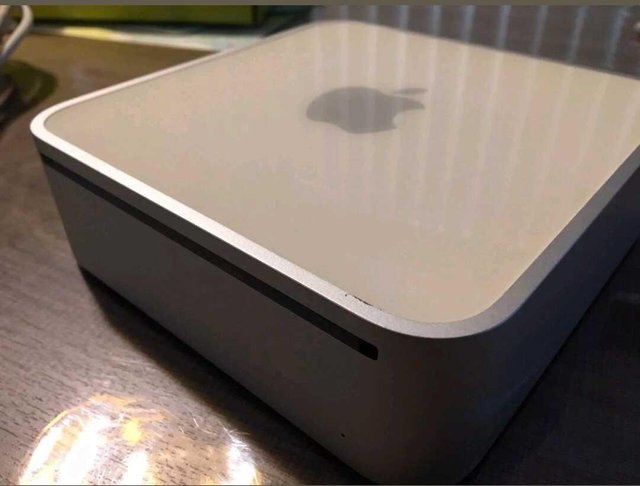An introduction to Mac Minis
In my previous post I explained how I ended up with a Mac Mini. This post covers the more technical side of that journey
A Mac What?
A Mac Mini is a Mac desktop computer that is, well, very small. It's quite similar in concept to a standard desktop pc, except for its compactness. Instead of a large, heavy tower, everything is packed into a small box the size of a stack of cds.
By 'everything', I do not mean the:
- monitor
- power cable
- keyboard
- mouse
These components need to be connected to the aforementioned box.
I happened to have a bluetooth mouse and keyboard, which meant that the only physical connections required were the power cable and monitor (though I did need a wired keyboard and mouse initially in order to set up the bluetooth ones).
What's in the box?
My Mac Mini is a 2007 model, and therefore YMMV
Mine has
- a Superdrive
- a DVI output
- a VGA output
- multiple USB inputs
- audio in and out (3.5mm) jacks
It has Bluetooth & wireless capabilities as well as some kind of built-in speaker
Operating Systems
As a Mac noob, I was pretty uninitiated when it came to Apple Operating Systems. So here's a crash course in what I learned
Mac OS X is what we're currently calling it. Each major version release is also given a fancy name:
- 10.0 = Cheetah
- 10.1 = Puma
- 10.2 = Jaguar
- 10.3 = Panther
- 10.4 = Tiger
- 10.5 = Leopard
- 10.6 = Snow Leopard
- 10.7 = Lion
- 10.8 = Mountain Lion
- 10.9 = Mavericks
- 10.10 = Yosemite
- 10.11 = El Capitan
- 10.12 = Sierra
- 10.13 = High Sierra
The other important thing to note is that anything before 10.8 or 10.9 is pretty outdated.
My Mini came with 10.7 which could be upgraded to 10.7.5. For some reason I couldn't figure out how to upgrade further (I think it had something to do with the hardware limitations). This meant that I was stuck in OS Lion, which happens to be unsupported for iTunes Store, Safari, and most other internet-connected apps I wanted to use.
This might explain why it was so cheap! The way I saw it, I had a few options:
- Continue using the limited functionality of outdated OS Lion - either risking security issues if I did connect to the internet, or avoiding using the internet whatsoever (thereby reducing it to a glorified DVD player)
- Somehow upgrade the hardware in order to allow for more recebt OSes to be installed - this would be complicated, time-consuming, probably expensive and, for someone who knows very little about this kind of stuff, definitely risky
- Ditch OS X and switch to Windows
Neither of the first two were ideal. After a bit of googling, I found the 3rd option. Ironically, the version of Windows that my hardware could handle was supported, as opposed to the outdated Mac OS. But I really didn't want to totally ditch the OS X experience and, let's be honest, Windows wasn't that interesting. I wanted something novel, that wouldn't overload or slow down my old hardware, while still having the option to use OS X if I needed to
The solution I came up with?
multiboot OS X & Linux
Multi what?
Turns out my assumption that a computer can only have one operating system is simply not true. Of course, I could use a virtual machine, a program that allows me to simulate a different OS within my native OS. Multibooting, however, is different and more flexible. It allows you to install more than one OS at the same level as your native OS. Then, when you start up your computer, you can choose which OS you want to use.
A lot of people do this with Mac OS and Windows. However, it's also possible with other operating systems. And, it's also possible with more than 2!
I was concerned that, even though supported versions of Windows were compatible with my hardware, they might slow it down. But turns out there is an absolute plethora of alternative operating systems out there that are designed to give old hardware a new lease on life - they are intentionally built to be light on resources. And so began my journey into the world of alternative operating systems (read: Linux)
